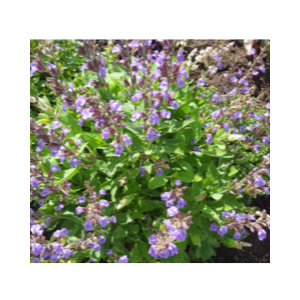
I use a lot of herbs in my cooking and prefer to grow my own because that way I can avoid the plastic pollution and harvest only what I need. Also herb plants when they flower attract a lot of bees in the garden but you want to encourage flowering towards end of season.
I am tired of paying $3 for a small packet of herbs preciously wrapped in plastic at the supermarket. In addition to the ones listed below I also grow chives, curry leaves and borage (mostly for the flowers – they make an excellent garnish).
Follow my tips and you will be harvesting fresh herbs all year round.
HERBS 101
1. GROUP THE HERBS
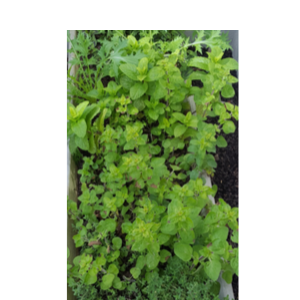
Group herbs according to their drought-tolerance level.
Mediterranean stalwarts rosemary, thyme, sage and oregano don’t need as much water as leafy herbs such as coriander, mint and basil.
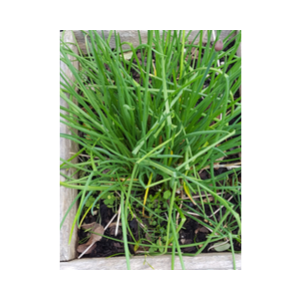
2. GIVE THEM SUNSHINE
Almost all herbs prefer full sun, so site your herb garden accordingly.
Just remember that coriander and parsley tolerate shade, and mint, lemon balm and chervil actually relish it.
3. CLIP REGULARLY
Even if you’re not going to use the herbs, a regular clipping will ensure a continuous supply of new leaves and help control rampant growth. Cut chives and mint right back to within 3cm of the ground.
4. CONTROL FLOWERING
Flowering herbs may be attractive and do attract bees – but if you want a continued supply of leaves, nip off the flower heads. That’s particularly important for basil, chives, mint, oregano and thyme.
There is plenty of history surrounding the culinary use of herbs. Most have some kind of medicinal benefit and I have included some of the interesting history.
Here is my pick of 8 herbs that are easy to grow and are essential to good cooking:
PARSLEY / ITALIAN PARSLEY
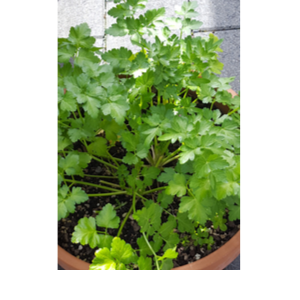
Parsley is native of Sardinia. Did you know that parsley is mentioned in Homer’s Odyssey?
I tend to use parsley for parsley pesto as well as gremolata. I use Italian parsley for salads too. Parsley needs plenty of feeding and regular watering to produce lush green leaves. If it gets too dry it’ll go to seed.
You can raise parsley from seed. But germination takes a long time – sometimes more than a month – and can be patchy. If you’re buying seedlings look for small plants in individual cells. This will mean the roots are disturbed as little as possible when you plant them out.
Tip: Remove the outside leaves to encourage growth from the centre.
MINT / VIETNAMESE MINT
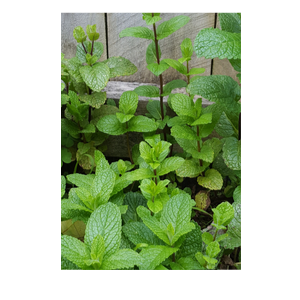
Mint originated in Ancient Greece. Vietnamese mint has a sharp peppery taste and is extensively used in South East Asian cuisine.
Mint grows best in moist rich soil in partial shade. Its underground runners can spread throughout the garden – so keep it contained in a plastic pot (30cm diameter) sunk into the ground. Cut the bottom off the pot first.
Over time, the stems will head for the edges and leave the centre bare. So dig up the pot every 2-3 years and replant young rooted sections of stem.
Tip: Mint is susceptible to rust (brown spots on the leaves). Trim it to 3cm above the soil to promote new rust-free growth. If this doesn’t work, get rid of the plant (not on your compost heap) and start again in another area of the garden.
SAGE
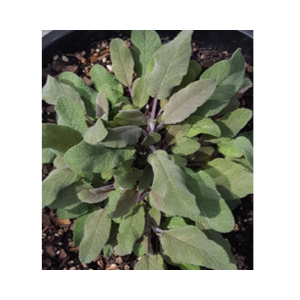
Sage is a member of the genus Salvia, of which there are 700 members. The plant has been held in high regard as a herb – both for its culinary uses and its health giving properties. Romans grew sage wherever they travelled as they believed the herb to prolong youth!
Sage is temperamental and while it is a perennial, it can get affected by frosts so perhaps grow it in a pot, in full sun as an annual.
ROSEMARY
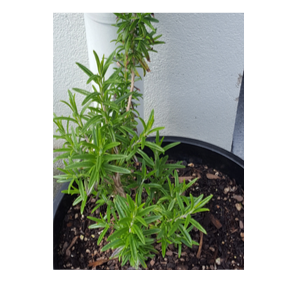
Rosemary is a herb that is rich in myth and symbolism and sacred to friendship. “There’s rosemary, that’s for remembrance. Pray you, love, remember,” says poor mad Ophelia in Hamlet.
Rosemary is good with roast potatoes and an excellent match for breads and pizzas.
Rosemary requires lots of sunshine and little water. Upright ones are better than trailing ones for cooking. Best to pick often and not let it get leggy or woody. At the end of season, prune hard.
THYME
There are many varieties of thyme, some very attractive but with little flavour. In its wild version the plant forms dense little cushions, and it is wonderful to walk on sun-crisped thyme. When we visited Bannockburn in South Otago, New Zealand, there was wild thyme growing alongside the road.
The best varieties for cooking are common thyme, lemon thyme, caraway thyme and pizza thyme. The flavour is so savoury and almost peppery.
Tip: In winter trim the bush back by about two-thirds.
OREGANO / MARJORAM
Both belong to the Origanum species, belonging to the mint family. Put simply, oregano is the wild form of marjoram.
Origanum means “joy of the mountains”. I find that fresh oregano smells very different to the dried oregano. The depth of flavour of fresh oregano depends on the amount of sunshine and water they receive.
Oregano, like rosemary and thyme, needs full sun and a soil that’s not too fertile to develop the essential oils that give the leaves their pungent flavour. It’s a spreading plant – so allow it a space about 30cm in diameter and trim it regularly to keep it bushy and encourage new growth.
The plants will grow for several years. But they need rejuvenation every 3-5 years to keep them compact and productive. Dig up the plant in spring, divide it and replant a shoot that has good rootlets.
Tip: There are several varieties of oregano – true Greek oregano has the best flavour.
BAY LEAVES
Laurus nobilis is the botanical name and I mention this because of this interesting bit of trivia…
Poets were crowned with “laurel” and hence poet laureate and in the Middle Ages, those students passing their first University exams were bacca laureatus.
Originating in the Mediterranean, the sweet bay is a dense evergreen with glossy leaves. It is an appropriate gift for those moving to a new home or starting life together.
Grow in well-drained soil with an incorporation of generous amounts of compost. They are slow growing and suited to containers.
CORIANDER
Originated in Iran and belongs to the same family as parsley and dill.
Coriander doesn’t like being transplanted and prematurely bolts to seed. Always grow coriander from seed.
I like growing coriander as microgreens. The trick is to keep moist and use regularly. They will be ready for use in 2-3 weeks.
Coriander flowers are an important food source for beneficial insects, especially little parasitic wasps and predatory flies.
So to attract many beneficial insects you want lots and lots of coriander flowers in your garden.
